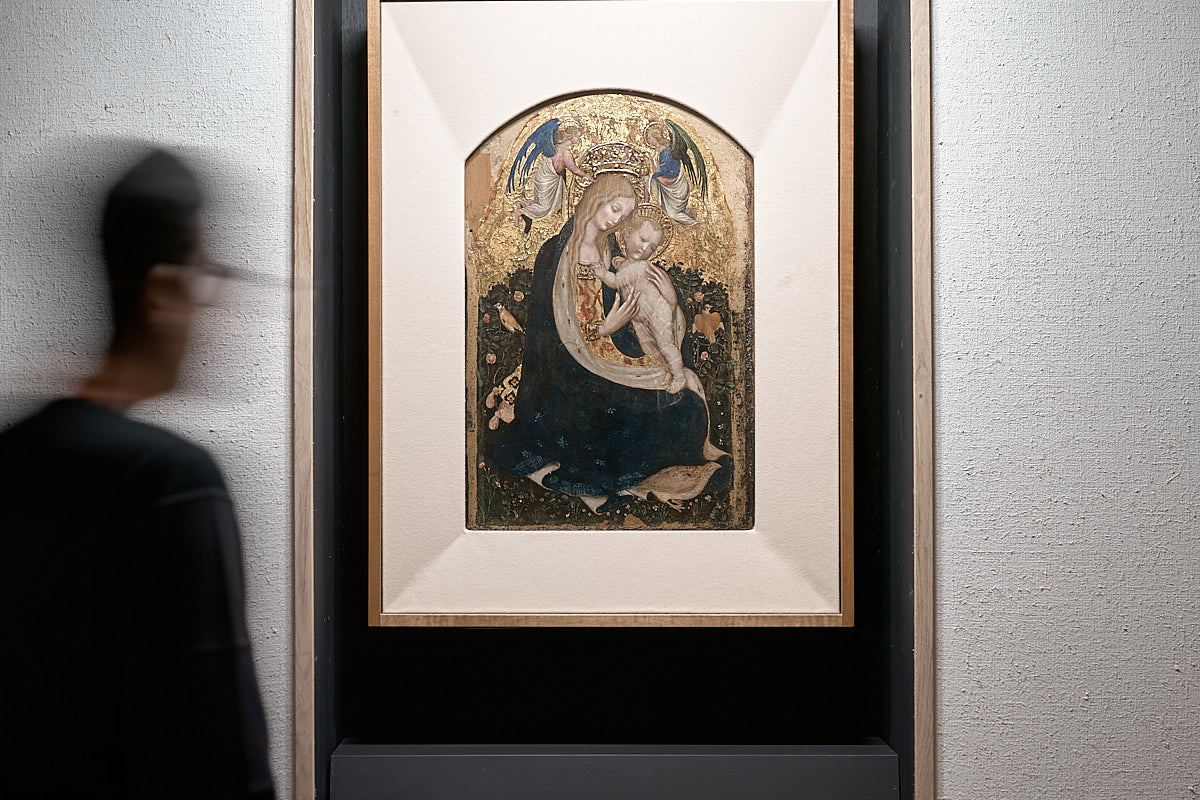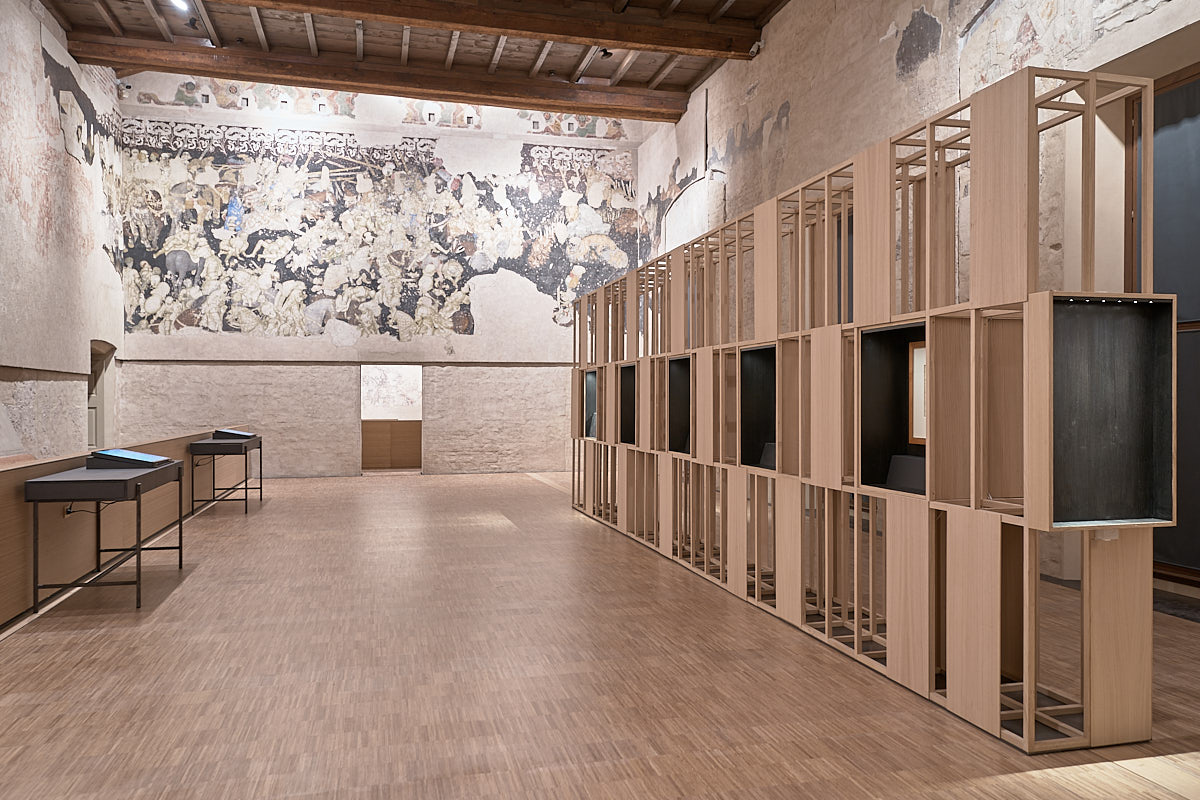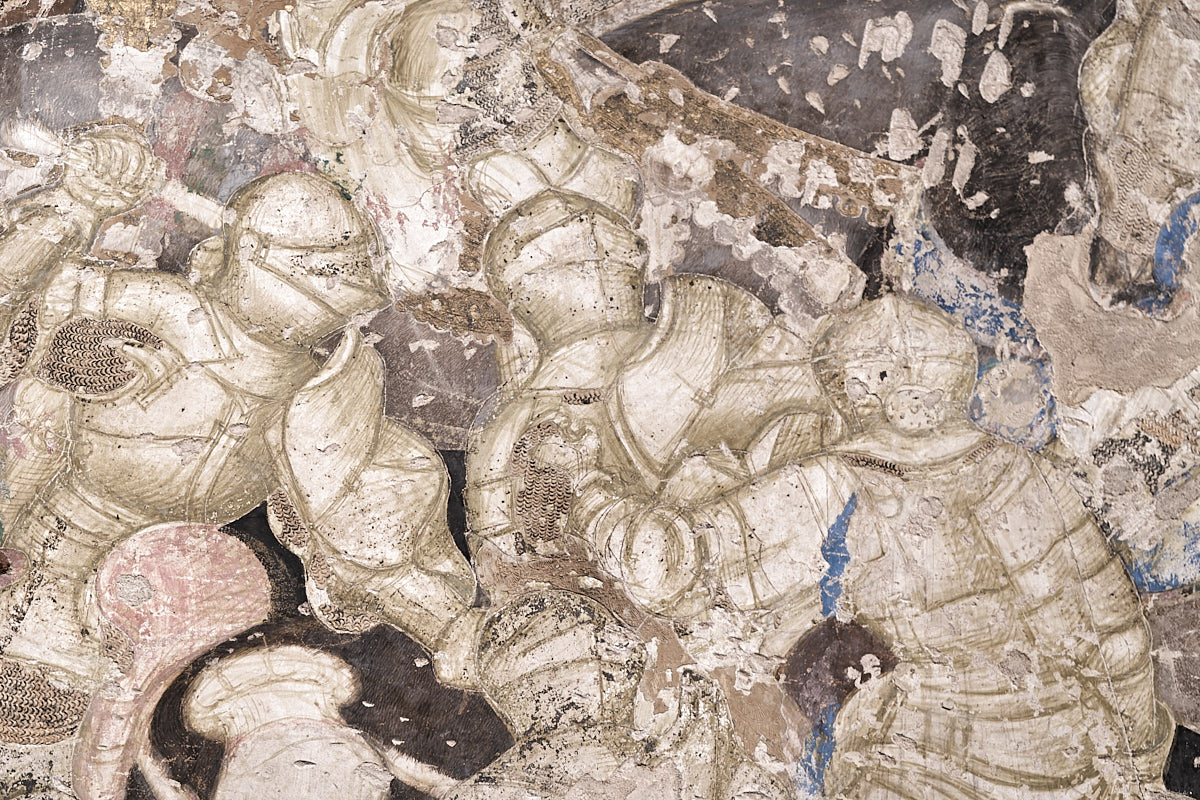The “Pisanello. The World’s Tumult” exhibition at the Palazzo Ducale in Mantua
The “Pisanello. The World’s Tumult” exhibition opens in Mantua. An exhibition created to mark the 50th anniversary of the exhibition curated by Giovanni Paccagnini, where one of the most important acquisitions in the field of art history in the twentieth century was presented: the discovery in the rooms of the Palazzo Ducale in Mantua of the Arthurian cycle painted using mixed techniques around 1430-1433 by Antonio Pisano, known as Pisanello.
The exhibition, produced and promoted by the Mantua Palazzo Ducale, is part of a wide-ranging, long-term programme to promote the work and the Sala dedicated to the artist, together with the adjacent Sala dei Papi. In fact, the layout of the entire room (9.50 × 17.50 m [31.16 × 57.41 ft]; 3 walls out of 4 have also revealed the frescoed sinopie; 100 square metres between the frescoes and sinopie) was permanently remodelled to make better use of an exceptional discovery for Italian artistic heritage.
Thanks to a new lighting system, the project completely restores clarity to the paintings, which were pulled out and relocated over fifty years ago. Instead of the natural diffused lighting from before, warm lighting is now aimed at Pisanello’s wall paintings, bringing out the reflections of the golden inserts and the painting’s magnificent details. In addition, a raised platform allows the visitor to appreciate the paintings at the correct distance calculated by the artist as, until now, the guided tour path was 110 cm [43,30 inch] lower due to subsequent changes to the room.

So, there is now a “new” tour path, enhanced by additional equipment, which allows the public to rediscover the richly-detailed work from the “correct” point of view, as described by Pisanello, as well as its curving lines and the artist’s extraordinary meticulous touch.
The permanent work in the Sala del Pisanello is supported by the work of the Politecnico di Milano, the regional campus of Mantua, under the supervision of Eduardo Souto de Moura; the temporary part of the exhibition is designed by Archiplan Studio which has also been in charge of providing all the artworks.
“Pisanello. The World’s Tumult”, curated by Stefano L’Occaso, is an exhibition that involves two large adjacent, connecting rooms on the main floor, the Sala del Pisanello and the adjacent Sala dei Papi, in addition to the rooms on the ground floor, set up to exhibit an overview of Late Gothic culture in Mantua, displaying an excellent selection of paintings, sculptures and miniatures.
The Sala del Pisanello is dedicated to the cycle of paintings linked to the preparatory drawings, the wall paintings and the sinopie exhibited. The Sala dei Papi is permanently set up with historical photos, the material traces of a special removal operation, some currently unexposed sinopie and everything that can describe the technique in Pisanello’s paintings, their discovery, the aforementioned exhibition in 1972 and the restoration work from the 1960s to today.

An interactive multimedia system completes the exhibition. It’s possible to view all the details of the Arthurian cycle at a magnification never seen before via a touchscreen monitor, and navigate an accurate three-dimensional reconstruction of the Sala del Pisanello created by the 3D designer Matteo Morelli when it was still called the Sala dei Principi, or at a point in time prior to the work that led to the discovery of the cycle.
Finally, in the rooms of the Appartamento di Santa Croce on the ground floor, suitably shielded from outside light, there are works from about the year 1400 to the middle of the 15th century that show and give an overview of the panorama of contemporary artistic culture in Mantua. These include the Dalle Masegne statues that now decorate the cathedral; the works of Stefano da Verona, another leading figure in the age of Pisanello; the illuminated manuscripts that show the development of the Gonzaga family’s tastes, a development that leads to the example of the missal of Barbara di Brandenburgo, started by Belbello da Pavia and finished by Girolamo da Cremona, in a richly Renaissance style.
Works by Pisanello that are not directly linked to the Arthurian cycle also find a home in this room.
The exhibition includes about 30 works, including international loans such as Pisanello’s masterpieces like the Virgin and Child with Saint Anthony and Saint George from the National Gallery of London, in Italy for the first time since its “departure” in 1862, and the paintings in the Louvre Museum in Paris. There’s also the Adoration of the Magi by Stefano da Verona from the Pinacoteca di Brera in Milan and, last but not least, the precious Madonna of the Quail, one of Pisanello’s juvenilia, considered to be one of the symbolic works of the Castelvecchio Museum in Verona, also available by virtue of an existing promotion agreement between the two Museums based on the artistic relations between Verona and Mantua.
Among the contributors supporting both the exhibition being undertaken and continued, we must highlight the Banca Agricola Mantovana Foundation. For many years it has offered its support to the initiatives promoted by the Palazzo Ducale, contributing to the promotion of the national artistic heritage and the dissemination of art and culture in the Mantuan community.
The exhibition comes with a brochure published by Electa and will be open until 8 January 2023.
